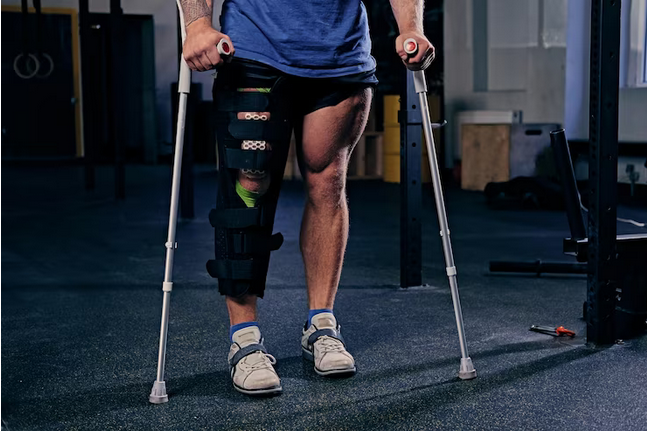Introduction
Knee pain and instability are common issues that can significantly impact an individual's quality of life and mobility. Knee unloader braces have emerged as an effective non-surgical intervention to address these problems. These braces provide support, reduce pain, and improve knee function, particularly in cases of knee osteoarthritis and ligament injuries. In this comprehensive guide, we will delve into the world of knee unloader braces, explaining what they are, how they work, and their role in managing knee conditions.
Understanding Knee Unloader Braces
Knee unloader braces, often referred to simply as "unloader braces," are specialized orthopedic devices designed to alleviate knee pain and improve joint stability. They are typically prescribed for individuals with knee osteoarthritis or specific ligament injuries, such as anterior cruciate ligament (ACL) tears. Unloader braces are called so because they work by "unloading" or redistributing the forces within the knee joint, thus reducing pressure on damaged or painful areas.
How Knee Unloader Braces Work
Knee unloader braces operate on a simple yet effective principle: they alter the distribution of weight and forces across the knee joint. By doing so, they reduce the load on damaged or degenerated cartilage, alleviate pain, and improve the overall function of the knee. Here's how they work:
1. Three-Point Pressure System:
Knee unloader braces typically feature a three-point pressure system. This system includes three adjustable straps or points of contact – one above and two below the knee joint. These straps are tightened to create a gentle, corrective force that shifts the alignment of the knee joint.
2. Offloading the Affected Compartment:
In cases of knee osteoarthritis, the condition often affects a specific compartment of the knee joint, either the medial (inner) or lateral (outer) compartment. Unloader braces are designed to offload the affected compartment by exerting pressure on the opposite side. For example, if the medial compartment is affected, the brace will create pressure on the lateral side, effectively unloading the damaged area.
3. Improved Joint Alignment:
By redistributing the forces within the knee joint, unloader braces help align the joint more appropriately. This alignment reduces friction and wear on the damaged cartilage, promoting better joint function.
4. Pain Reduction:
Unloader braces are highly effective in reducing pain associated with knee osteoarthritis or ligament injuries. By unloading the affected area and improving joint alignment, they alleviate discomfort and allow individuals to engage in daily activities with less pain.
Applications of Knee Unloader Braces
Knee unloader braces are commonly prescribed for two primary conditions:
1. Knee Osteoarthritis:
Osteoarthritis is a degenerative joint condition that often affects the medial or lateral compartment of the knee. Unloader braces are used to reduce pain and improve function in individuals with knee osteoarthritis by offloading the affected compartment.
2. Ligament Injuries:
Knee ligament injuries, particularly ACL tears, can result in instability and pain. Unloader braces help stabilize the knee and provide support during activities, preventing further damage and promoting healing.
Benefits of Knee Unloader Braces
Knee unloader braces offer several benefits for individuals with knee pain or instability:
1. Non-Surgical Solution:
Unloader braces provide a non-surgical option for managing knee conditions, allowing individuals to avoid invasive procedures.
2. Pain Relief:
One of the primary benefits is pain relief. Unloader braces can significantly reduce knee pain, enabling individuals to engage in activities they may have otherwise avoided due to discomfort.
3. Improved Function:
By promoting better knee alignment and stability, unloader braces enhance joint function, making it easier for individuals to perform daily tasks and engage in physical activities.
4. Delayed Surgery:
In some cases, unloader braces can delay or eliminate the need for surgical interventions, such as knee replacement or ligament reconstruction.
5. Customization:
These braces can be customized to fit the individual's unique anatomy and provide the right amount of support and offloading for their specific condition.
6. Enhanced Quality of Life:
Overall, unloader braces can significantly improve the quality of life for individuals with knee pain or instability, allowing them to maintain an active lifestyle and independence.
Considerations and Limitations
While knee unloader braces offer substantial benefits, it's important to consider certain limitations and factors:
1. Prescription and Fitting:
Proper fitting and prescription are crucial for the effectiveness of these braces. A healthcare professional should assess the individual's condition and prescribe the appropriate type of unloader brace.
2. Compliance:
Consistent wear of the brace is essential for optimal results. Individuals must commit to wearing the brace as directed by their healthcare provider.
3. Not Suitable for All Conditions:
Unloader braces are most effective for specific knee conditions, such as knee osteoarthritis and ligament injuries. They may not be suitable for all types of knee pain or instability.
4. Individual Response:
The response to unloader braces can vary from person to person. While many individuals experience significant pain relief and improved function, others may not respond as favorably.
Conclusion
Knee unloader braces are invaluable tools in the management of knee pain and instability, particularly in cases of knee osteoarthritis and ligament injuries. By redistributing forces within the knee joint and promoting better alignment, these braces offer a non-surgical solution that reduces pain, improves function, and enhances the overall quality of life for individuals with these conditions. However, their effectiveness depends on proper prescription, fitting, and consistent use, making collaboration with a healthcare provider essential for those considering the use of knee unloader braces. When used correctly, these braces can provide substantial relief and help individuals regain their mobility and independence.





Comments